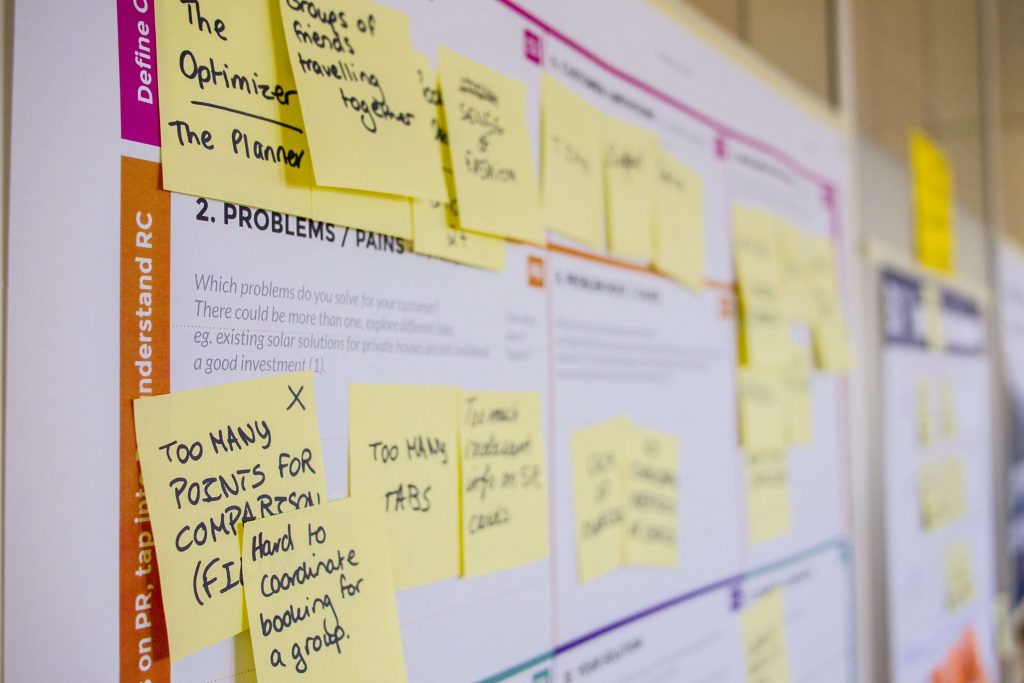This month, employees will head back to the office as Omicron dies down. Here’s how your team can find routine amid uncertainty.
This month, employees are heading back to the office. Again.
As Omicron dies down and health experts give the green light, workers across the nation are emerging from home and headed back into the office. Yet for months now, the return-to-the-office has been a long run of fits and starts, as COVID outbreaks make continuity tricky—for both workers and their leaders. On top of that, leaders face ongoing supply chain issues and millions of employees quitting their jobs.
Uncertainty is the new normal.
We’ve rounded up six tips to manage the COVID rollercoaster and ensure your team gets the routine it needs.
1. Over communicate and manage expectations. Safety protocols are constantly changing, so it’s important for people to really understand what your company is doing now and why, and what may happen in the future, says Karenthia A. Barber, a Baltimore speaker, coach and organizational development expert. That way, they will be far more ready to shift and make adjustments amid uncertainty. Conversely, a lack of communication can drive anxiety and conflict among staff, and ultimately, it can erode trust.

2. Check in regularly with employees, and really listen. The Great Resignation has been a huge wakeup call to companies everywhere. Culture matters. And so does empathy. Train your managers to act like coaches, because trust is paramount these days.
The voluntarily quit rate is proof that employees are not feeling valued, overworked and burned out. Remote work has also left them feeling disconnected. Some people still prefer to work from home and avoid a commute, while others may not feel comfortable going back to the office because of their company’s corporate culture. And when it comes to COVID and the office, feelings may run the gamut. There’s the worry about the physical safety of gathering in groups at the office when COVID lingers.
Leaders must recognize and acknowledge the range of emotions and concerns that employees are experiencing—and perhaps even leaders are feeling themselves, too, says Barber.
Leaders must plug in, ask questions and really hear what employees say about going back to the office, how they prefer to work, and how they feel about COVID.
“Some leaders are having the same emotions, but they believe that because they are leaders, they can’t be human,” she says. “Being transparent and removing the veil of secrecy can help them connect better with employees.”
Check-ins with people over email are not enough. Pick up the phone and have a conversation, says Barber. “There are things you can get from tone and inflection that you can’t get from an email.”
3. Pay attention to your employees’ why. If you take a close look at why people will want to come into the office, you can design your office to support them better.
“Everybody’s situation is unique,” says Hannah Hackathorn, senior principal and head of design at Unispace, a commercial design-build firm. The success of a workplace is no longer measured by density and efficiency. It’s about a meaningful experience, she says.
An individual’s reasons for going to the office may range from ergonomic furniture and better Internet connectivity, to a desire to get away from the normal routine at home. But getting back to the office is key to maintaining a sense of camaraderie and culture and impromptu mentorship.
More designers are working to give workers more room, more hybrid work stations or creating spaces that can be used for a variety of different types of work, says Tamra Fuscaldo, director of interior design at M+A Architects in Ohio.
Those spaces should appeal to a wide range of personalities, work styles and behaviors. This spring, Unispace will test out a “club lounge” concept for the office that aims to give people a coffee shop vibe that draws some people to want to work in a coffee shop versus the office. And it’s increasingly focusing on “universal design”, testing designs that use various colors, textures, lighting and sound—as well as biofillia or plant greenery—which all can impact behavior. Be cognizant that not everyone is an extrovert, and create space for people to break away to do emails, calls and focus work, Hackathorn says.
It will involve testing, trial and error and understanding what works for your unique organization. “There is no perfect formula,” Hackathorn says. “We’re in the re-discovery mode to find out why people will come to the office.”
4. Focus on Flexibility. Last year, 65% of workers were seeking jobs and cited flexibility as a top reason for their search, according to a PricewaterhouseCoopers survey. Technology has made work more agile and interdependent, and employees are most effective when they work in fast-moving, flexible teams. So building flexibility into the office will be key going forward.
Says Johnna Keller, director of sustainability at M+A Architects: “The more flexible and adaptable we can make a space, the more future-proof that can be for whatever… the next pandemic, for climate change, the next cultural trend.”
Organizations can allocate different areas that allow the end user to configure the space for what they need. Modular office walls, meeting rooms and private phone booths that can be changed on the fly based on the number of people who come to the office, when, how often and how they use the space.
A portion of cubicles could also be set aside for hoteling, offering non-descript space for those popping in for a day or two, while company-sponsored cafeterias and coffee shops make the office more comfortable for those ready to spend more time in the office.
Hackathorn’s team is exploring an experimental space with flexibilities built in, such as reconfigurable furniture and displays such as surface hubs and smart boards that can be movable. It would allow people to push furniture aside to create an analog room for marker boards and a space to tack up items for brainstorm sessions. When working remotely, her team uses a software called Miro and Microsoft Teams to collaborate on the same board.
5. Create a regular cadence—one that offers continuity whether in the office or at home. At Phoenix startup YellowBird, employees come to the office every Monday to review operational indicators, sales pipeline and work any issues holding the team back. They also meet once a month to celebrate birthdays and recognize key employees. Daily huddles or weekly meetings could be your company’s norm, whether it’s in the office in-person or on Zoom. But encourage people to keep cameras on to really encourage connection and improve trust and communication, says Barber.

6. Make your workflow crisis-proof. YellowBird, which offers on-demand staffing for risk management professionals, encourages workers to upload everything to the cloud to ensure they can work from anywhere. So if uncertainty pops up suddenly, all files are in one central location. “Our office could literally blow up, and we wouldn’t lose anything,” says Michelle Tinsley, YellowBird COO and co-founder. The company also cross-trains employees to ensure more than one employee can perform routine tasks.

Whether people are spending three weeks working remotely during an outbreak or back in the office for a hybrid workweek, your office should be prepared for anything.
“The office is still important,” says Tinley. YellowBird ensures new hires spend at least 80% of their time in the office for the first month, which aids in learning. People may overhear sales calls and get a better feeling for what people are talking about, the value proposition and the culture. Afterall, most people believe hybrid work and COVID aren’t going away anytime soon—and neither is the office. “It’s the way we’ll be operating for years to come,” says Tinley.
